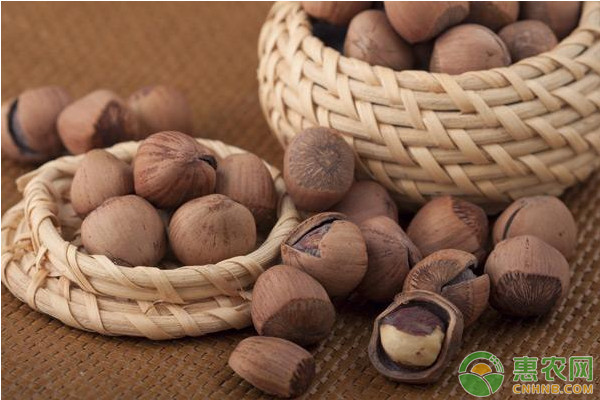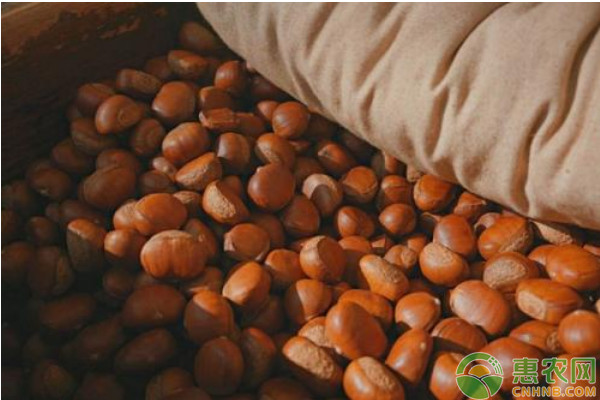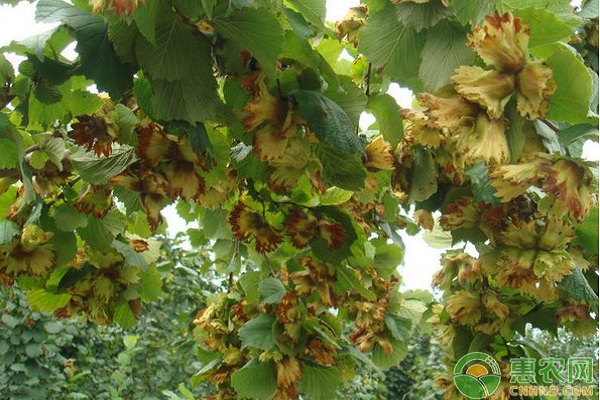Cultivation Techniques and Pest Control of Long Mangzi in Fujian Province
Changmangzi is a specialty of Fujian, and it is one of the varieties of Jianye Castanea. The main thing to explain today is the cultivation technique of Fujian Changmang. If you have also planted hazelnuts, you can come to Huinong.com to learn this technique and see What is the difference. 1 Garden selection Changmangzi has strict requirements on the conditions of the site, has strong adaptability to the soil, is not strict with the climate and soil quality, and can adapt to the more arid and thin soil. The suitable site conditions are the upper part of the hillside, red and yellow soil, 10cm of humus layer, 50cm of soil thickness, more gravel content, less than 20 mountain slope, pH value of 5.6, medium water content and medium fertility. The planting area requires sufficient light, long sunshine and convenient transportation. 2 grafted seedling cultivation 2.1 Rootstock selection Wild buttercups are used with the grafted rootstocks. The rootstock colonization time is about January 10, when the surface temperature is suitable for the growth of wild buttercups. The row spacing of the planting plants is 4m×4 or 4m×3m, and the planting points of length × width × depth 80cm×80cm×60cm are excavated, and 40 to 60 plants are planted per 667m2. After planting, the topsoil is covered in time, and the seedlings are gently lifted to make the roots fully stretched into contact with the soil. Then use the foot to step on the ground, the fill height is about 8 cm, to facilitate drainage. 2.2 Grafting time Due to the strong resistance and rapid growth of wild ranunculus, the growth rate in the early stage is fast. After 2 years, the single plant can be grafted with Long Mang, and the third year of the third year of wild ranunculus cultivation is the best grafting time of Changmang. Grafting was carried out by cutting method, and the cuttings were collected from the 10-year-old mother tree of Long Mang, and the resulting female branches were selected. The female buds were full, 8 to 10 cm long and 0.88 to 1. 0 cm thick. 3 grafted seedling management 3.1 patch After grafting, it is necessary to check the survival of the scion in a timely manner. If it is not live, it should be replenished in time to improve the survival rate of grafting. 3.2 timely pruning The growth of wild ranunculus rootstocks is fast, the foundation is good, the buds grow vigorously, and the stalks grow rapidly. Therefore, the germinated sprouts should be trimmed in time, and 3 to 5 trunk buds can be retained. 3.3 In addition to sprouting and lifting the bindings Since the upper part of the rootstock was completely cut off during grafting, the base of the rootstock seedlings would sprout at the base of the year, and the seedlings should be removed in time to ensure the growth of the new shoots. When the length of the new tip of the scion is about 30cm, the bound plastic film strip should be loosened in time. 3.4 topping In the first and second years after grafting, the new shoots should be selectively topped after germination. After the new shoots are up to 30 cm long, the first topping is performed, and the core branches are determined at the same time. The second and third toppings are performed when the tips are as long as 30 to 35 cm. After picking the heart, the number of mother branches can be significantly increased, and the result can be obtained in the second year after grafting. 4 result tree management 4.1 Fertilization When the Castanea henry enters the dormant state, the organic fertilizer can be applied as the base fertilizer, and 1 t is applied every 667 m2, and once every 2 years. The fertilizer was applied three times a year, the first time was carried out in March-April, combined with cultivating and weeding, and the plant was applied with 0.3 kg of urea to promote the germination and flower bud differentiation of young leaves; the second time was carried out in July, and the potassium dihydrogen phosphate 280 g was applied. Potassium chloride 120 g; the third time after the fall of the chestnut fruit in November, to restore the tree body potential, the plant applied potassium chloride 210g, potassium dihydrogen phosphate 90 g, digging the annular ditch at the position of the canopy drip line And cover the soil in time. 4.2 cultivating and weeding After the grafting, 2 times of cultivating and weeding are carried out every year. The first time, when we harvest the chestnut, weeding 1 time (early 8 - September), which is beneficial to the harvesting of chestnut and weeds; the second time in the leaves of Castanea henryi In the dormant period, the cultivating with the cone chestnut clearing garden is 20 to 30 cm deep, which should be carried out after the rain, which not only removes the grass, but also prevents the topsoil from squashing, improves the soil ventilation and promotes the rapid growth of the saplings. 5 plastic trim 5.1 spring pruning A large number of young shoots sprout from March to April every year. At this time, trimming should be carried out to cut off excess nutrient shoots, young shoots and long branches. 5.2 autumn trim Every year from July to August, the growth of Castanea henryi is strong. At this time, the branches are covered with fruit. Some of the branches will grow young branches at the top, and each branch contains 2 to 4 fruits, in order to reduce nutrient consumption. Cut the top branches. 5.3 winter pruning Every year in December, Castanea henryi grows into a dormant state. At this time, it is the best time to pruning, and the tree can be fully trimmed, that is, the various branches left in the tree are trimmed. According to the natural tree shape requirements, the shady branches, diseased branches, overly dense branches and dead branches on the tree are cut off to ensure the growth and yield of the next year. 6 pest control 6.1 Chestnut Retina 1 Eliminate the source of insects: All the chestnuts must be collected and processed intensively to eliminate the source of the insects; during the fruiting period, the chickens can be placed in the yard to feed the larvae. 2 soaking in warm soup: soak the seeds in water at 50 ~ 55 ° C for 10 min. 3 Chemical control: The orchard, which is seriously damaged by the chestnut, can spray the canopy 2 to 3 times with 5% dichlorvos emulsion 1000 times in the active period of the adult, which can control the adult pests and lay eggs. 6.2 pruning elephant 1 artificial killing: In the adult occurrence period, using pruning like a pseudo-death, using the method of shaking the tree, shaking the trunk to drop it, collecting it and burning it. 2 Winter Qingyuan: In combination with tending, deep soil is turned over during the winter clearing of the garden, and the winter insects are frozen. 3 chemical control: in mid-June, on sunny days 8: 00 - 9: 00, or 6:00 pm - 17: 00, with 90% trichlorfon 800 ~ 1000 times liquid or killing pine 500 ~ 1000 times liquid spray Prevention and treatment. 4 drug killing adults: In the adult emergence period, choose to spray 500-5000 times of imipenem EC or spray 75% phoxim EC 1000-2000 times in the morning or evening of breeze or windless. 6.3 Chestnut bee 1 artificially picked tumor: artificially picking the tumor before the end of May and burning it. 2 Protection and utilization of natural enemies: There are many natural enemies of the chestnut bee, and the parasitic rate of the bee stings is high. It is often parasitic in the tumors of the chestnut tree, which is harmed by the chestnut bee. Therefore, the bee sting can be used to control the chestnut bee, and the tumor mites on the tree are manually picked up before winter. In the second year of spring, the parasitic wasps fly back into the forest to improve the parasitic rate of the bee, and the biological control effect is achieved. . 3 Chemical control: Spraying 1000 times solution of parathion EC from late May to early June. 6.4 Control of aphid control: It can be sprayed with 50% marathon emulsion 1000 times solution or 25% imipenem EC 2000 times in the juvenile period from June to August. 6.5 Scarabs 1 push fire to kill: In the woodland between the fire, the chafer will cast the net. 2 Artificial killing: Artificial killing is carried out by using the fake nature of the chafer. When the night or day is just bright, a plastic film is placed around the tree, and the branch is shaken to shake it off, bringing out the chestnut garden to burn. 6.6 Yunban Tianniu 1 hook kill larva: Check frequently during larval foraging, use wire hook to kill or stab larvae. 2 artificial culling: artificial culling during the adult activity period from June to July, and check whether there are spawning, wood chips and worm droppings under the trunk of 1. 5m. After discovery, the egg can be smashed with stones or hammers to eliminate Eggs or newly hatched larvae. 3 Prevent adult eggs from spawning: Use white paint to paint the trunk part of the tree, which can kill eggs and larvae, and prevent adult eggs from laying eggs. 6.8 Powdery mildew 1 Eliminate the pathogen: Remove the tree shrews with diseased leaves in winter, and burn them together with the leaves to eliminate or reduce the pathogens of wintering and reduce the source of initial infection. 2 Strengthening the management of tending: Rational fertilization and irrigation, pay attention to the reasonable combination of the three elements of fertilizer, and apply potassium fertilizer and trace elements such as boron, silicon, copper and manganese to improve the disease resistance of the tree. 3 Pharmacy control: spraying sulfur powder during the onset of 4-6 months, or 0. 2 ~ 0. 3 Baume sulphur sulphur mixture, or 0.5% to 1. 0% Bordeaux mixture, or 50% antibacterial WP Powder 1000 times liquid control. 6.9 Anthrax 1 Agricultural control: Breeding disease-resistant varieties, strengthening cultivation management, cultivating and weeding, paying attention to ventilation and light transmission, and rational close planting; early detection of diseased fruit in time, concentrated burning of diseased branches and susceptible seeds. 2 Chemical control: 3 - 4 months, use 400-600 times spray control of fruit disease; the growth period can be selected from 1: 1 : 200 or 1: 0. 5: 200 Bordeaux mixture, 50% retort in the middle and late June Wettable powder 500 ~ 600 times liquid + 0. 03% water gel, 65% Fumei zinc wettable powder 300 ~ 500 times liquid, enemy bacteria 400 ~ 600 times liquid spray control, generally 10 to 20 d spray 1 time. 6.10 Chestnut blight 1 cultivation of disease-free seedlings: Seedlings are produced in disease-free areas, disease-free scions are selected for grafting, and rootstocks are selected for disease resistance. 2 Strengthen the management of chestnut garden: Fertilize, irrigate, cultivate and weed in a timely manner to enhance the tree potential and improve disease resistance; timely cut off diseased branches and burn them centrally. 3 Chemical control: From the end of April to the beginning of May, apply 402 antibacterial agent 2000 times solution or 70% thiophanate powder 400 times solution for prevention and treatment, apply once every half month, continuously apply 5 times, the control effect can reach 94. 4 %the above. The above is the whole content of Fujian Changmang cultivation technology. If you want to learn comprehensive planting techniques, you must pay attention to the Hui Nong Network's Hui Nong School Channel! Roller Hook Tomato Plant Support Roller Hook Tomato Plant Support,Tomato Trellis-trellising,Greenhouse Tomato Plant,Accessory Trellising Roller Hook JIANGSU SKYPLAN GREENHOUSE TECHNOLOGY CO.,LTD , https://www.alibabagreenhouse.com


